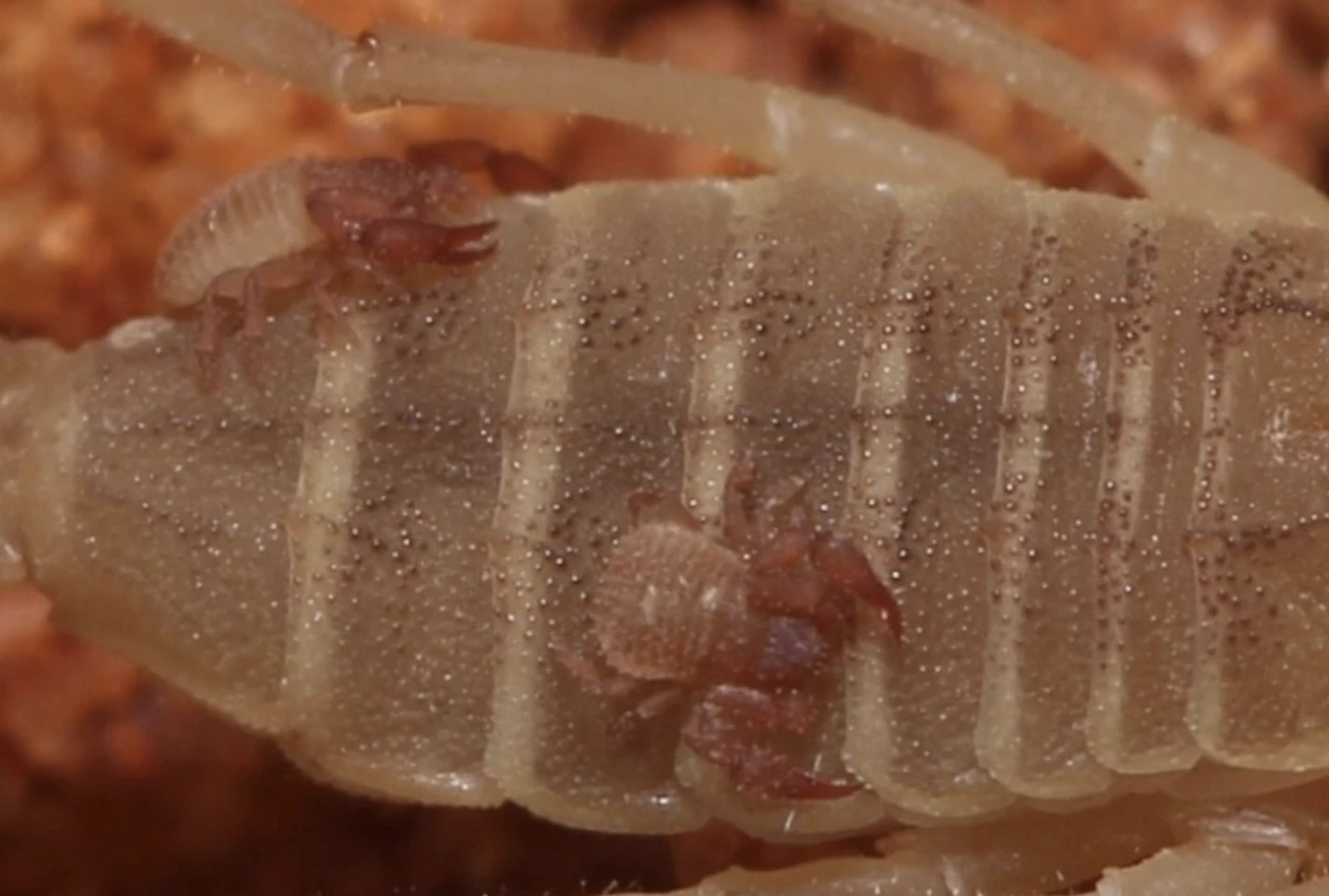Researchers have captured a pseudoscorpion hitching a ride on a true scorpion, and it’s the first time this interspecific rideshare has been observed anywhere in the world.
Pseudoscorpions, also known – perhaps a little unfairly – as ‘false’ scorpions, are tiny arachnids that half-resemble their larger namesakes. They have scorpion-like pincer-like claws (pedipalps) but lack the distinctive stinging tail. And, at just 2 to 8 mm in length, they’ve also developed some inventive means of travel.
In fact, it’s believed all of the 20-plus known species will sneak a ride on the back of flies, beetles, birds and bats in order to disperse across broad areas. Known as phoresy, and much like mites on insects or even humans riding horses, this natural transport mode is an efficient, energy-saving way for species to make up for what they don’t have.
With more than 1,000 observations of the Birulatus israelensis scorpion over a seven-year study in Israel, only two instances of the Nannowithius wahrmani false scorpion saddled up on their bigger distant relatives were observed.

Curiously, the two scorpion Ubers were taken around the same time in late spring, in different years, as the B. israelensis set off along ant trails from its habitat it shares with Messor ants. The Hebrew University of Jerusalem researchers found that some pseudoscorpions clung to the scorpion’s dorsum for more than three weeks and, in one case, four of the tiny insects remained in the passenger seat even after their scorpion transport had died. This suggests the pseudoscorpions were waiting for a cue, such as passing a suitable habitat at which they’d abandon ship.
The scientists also believe that the specific timing of the trips could be triggered by the ants’ increased foraging activity, which sees more elaborate trails laid and the opportunity for the scorpions and pseudoscorpions alike to find new nests.
While it’s not known when phoresy developed as a go-to strategy for pseudoscorpions, it seems they certainly don’t care for walking on their own eight legs. Evidence suggests phoresy has now evolved at least five times across species. And because the rider, known as the phoretic, doesn't negatively impact the host vehicle, we can only assume that their Uber rating is hovering at around 5 stars.
The research was published in the journal Arachnologische Mitteilungen: Arachnology Letters.
Source: The Hebew University of Jerusalem via phys.org






